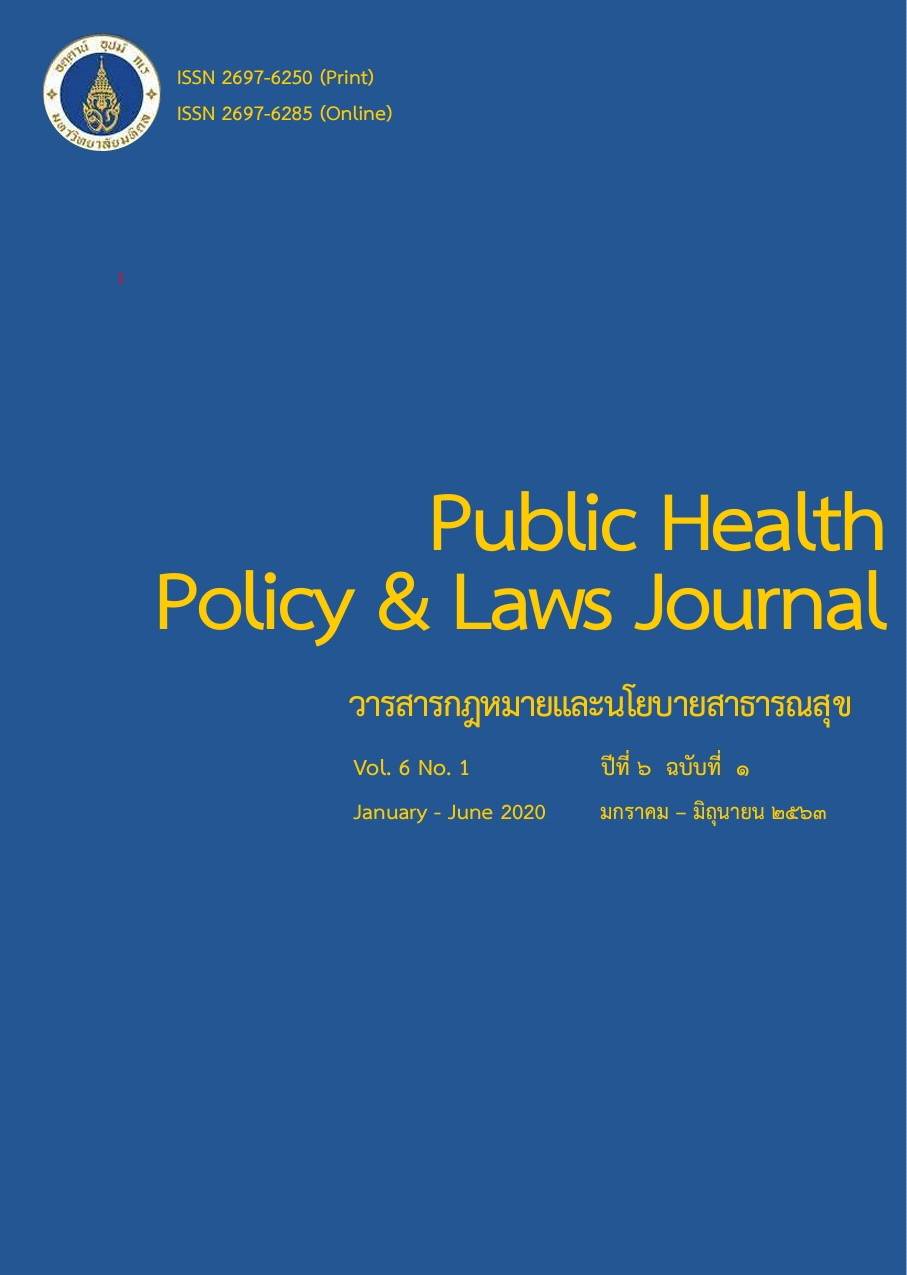Kratom:Herbal medicine and according to southern local knowledge under legal restrictions and misuse in young adult
Keywords:
Keyword: Herbal medicine and use according to local knowledge/Legal restrictions/ Misuse of Kratom.Abstract
Kratom (Mitragynia speciosa korth) has been recognized and increasingly used as a remedy for opioid. Withdrawal by individual patients which self‐treated chronic pain such as muscle relaxation, diarrhea, and cough relief in Thai Traditional medicine. In contrast, nowadays Thai FDA (Food and Drug Administration ) does not allow this herbal mitragynine ingredient in any medication formula, due to Narcotic Act, B.E. 2522 (1976)ม resulting in Thai wisdom being lost. This law does not allow anyone to possess or grow this plant, which will lead to suppression and arrest. This is the cause of disappearing of folk healers and Thai traditional medicine. Krotom plant is destroyed due to the negative attitude of government officials and lack of understanding in health science, and cultural context of local peopleม or lay people, who use this herbal plant for a long time. Some individuals applied Kratom by mixing it into water for the purpose of narcotic recently and call it “Kratom cocktail”. There are many recipes such as SI Kun Roie, Ha Kun Roie, but the result of the research showed that very few mitragynine presence in kratom cocktail (about 90 Milligrams per liter). At the same time, it was founded that the quantity of Codeine and CPM were very high. Therefore, it should not expected for the conclusion of Kratom that it is the cause for crime, or social problems This conclusion should not be without the evidence and social factors, for confirmation.
References
คัมภีร์แพทย์ไทยแผนโบราณ เล่ม 1 ขุนโสภิตบรรณลักษณ์ (อำพัน กิตติขจร) (สมาคม เภสัชกรรมไทยโบราณแห่งประเทศไทย)
มหาวิทยาลัยธรรมศาสตร์และการเมือง ประมวลกฎหมายรัชกาลที่ 1 จุลศักราช 1166 พิมพ์ความใน : กฎหมายตราสามดวง เล่มที่ 2 มาตรา 8
ไพศาล ลิ้มสถิต. ปฏิรูปกฎหมายพืชกระท่อมเพื่อสุขภาวะของประชาชนและภูมิปัญญาการแพทย์แผนไทย. วารสารการแพทย์แผนไทยและการแพทย์ทางเลือก. 2559;14(3) :231-241.
ดวงแก้ว ปัญญาภู, สุเมธี นามเกิด, นิตาภา อินชัย และกุลศิริ ยศสถียร. กระท่อม: สมุนไพรหรือยาเสพติด. วารสารการแพทย์แผนไทยและการแพทย์ทางเลือก. 2559;14(3) :242-256.
ธนัช นาคะพันธ์, มณฑกา ธีรชัยสกุล, สิริพร ปัททุม, ขวัญเรือน สมพิมาย, ปรีชา หนูทิม. (2559) การศึกษาการใช้ประโยชน์จากกระท่อมในการรักษาโรคของหมอพื้นบ้านภาคใต้. วารสารการแพทย์แผนไทยและการแพทย์ทางเลือก.2559;14(3) : 274-286.
สำนักงานคณะกรรมการอาหารและยา. ผลเสียยา 4x100 (ยาโปร) 1 มกราคม 2563 เข้าถึงจาก [Online] Available from https://oryor.com/oryor_miniweb/knowledge_detail.php?cat=2&id=7
Downloads
Published
How to Cite
Issue
Section
License
Disclaimer and Copyright Notice
The content and information presented in articles published in the Journal of Law and Public Health Policy represent the opinions and sole responsibility of the respective authors. The editorial board does not necessarily agree with or assume any responsibility for the views expressed.
All articles, data, content, images, and other materials published in the Journal of Law and Public Health Policy are the intellectual property of the journal. Any individual or organization wishing to reproduce, distribute, or otherwise use the entirety or any part of such materials must provide proper citation.





